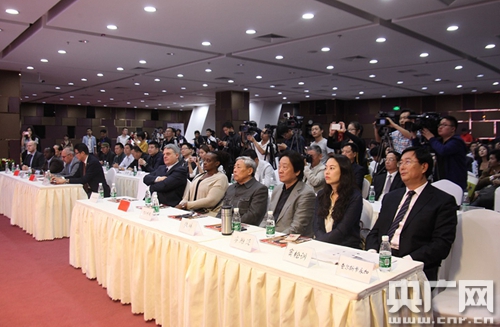Looking At The Challenges And Solutions Faced By The Belt And Road Initiative From Actual Cases
Looking At The Challenges And Solutions Faced By The Belt And Road Initiative From Actual Cases
The Belt and Road Initiative is a major international initiative proposed by the Chinese government, aiming to promote global trade, infrastructure construction and economic cooperation. The initiative covers many countries and regions, so in its implementation, various challenges and conflicts will inevitably arise. Such as cultural differences, infrastructure and legal system differences, and challenges of diversified management teams. This article will briefly sort out these challenges, solutions and cases.Because the Belt and Road Initiative involves multiple countries and regions, each place has its own unique cultural background, cultural differences are one of the most common challenges in the Belt and Road Initiative. The challenges of cultural differences are specifically reflected in the following aspects:. Language communication disorders. Language differences between different countries lead to communication problems, difficulty in understanding the other party
The Belt and Road Initiative is a major international initiative proposed by the Chinese government, aiming to promote global trade, infrastructure construction and economic cooperation. The initiative covers many countries and regions, so in its implementation, various challenges and conflicts will inevitably arise. Such as cultural differences, infrastructure and legal system differences, and challenges of diversified management teams. This article will briefly sort out these challenges, solutions and cases.

Respond to the challenges of cultural differences
challenge:
Because the Belt and Road Initiative involves multiple countries and regions, each place has its own unique cultural background, cultural differences are one of the most common challenges in the Belt and Road Initiative. The challenges of cultural differences are specifically reflected in the following aspects:
Language communication disorders. Language differences between different countries lead to communication problems, difficulty in understanding the other party's intentions, and can lead to project delays or errors.
Etiquette issues. Etiquette will also vary greatly in different cultures, such as gift gifts, communication methods and etiquette norms.
Conflict of values. Different cultures have different views on business ethics and decision-making. This can lead to controversy and dissatisfaction.
Solution:
Businesses can provide employees with cross-cultural training to help them understand and respect the cultures, customs and values of different countries. This kind of training can cover language communication skills, cultural sensitivity, etiquette norms, etc. to improve employees' cross-cultural communication and collaboration capabilities.
Enterprises can formulate customized policies and practices to meet local cultural needs. This includes adjustments in business decision-making, management processes and human resources to ensure alignment with local culture and reduce potential conflicts and misunderstandings.
Hire a cultural consultant or expert to provide specific advice on the culture of the target country. These experts can provide in-depth understanding of social etiquette, business habits and cultural backgrounds to help companies better adapt to the local environment.
Through these means, companies can better solve the challenges brought by cultural differences, promote cross-cultural cooperation, and ensure the smooth implementation of the project.
Case analysis:
In Central Asian countries, social etiquette and business customs have their own unique features. In order to avoid the possible impact of different cultural backgrounds, Zoomlion provides employees with training and consultation on social etiquette and business customs in Central Asian countries. Including Central Asian countries' culture, history, business habits, etiquette, etc. Meanwhile, the company hired cultural consultants to understand the local culture and let them provide specific advice to the company on social etiquette and business practices. Employees are encouraged to actively participate in local community and cultural activities to build closer relationships, deepen understanding, and promote cross-cultural exchanges.
Through these measures, this International Investment Co., Ltd. successfully overcomes cultural differences with Central Asian countries, establishes a solid cooperative relationship, and promotes the development of commercial projects.
Respond to the challenges of differences in infrastructure and legal systems
challenge:
The different levels of infrastructure in different regions will have an impact on the feasibility and efficiency of the project. Different countries have different laws and regulations. Enterprises need to ensure that their business activities comply with local laws, otherwise they will inevitably face legal problems. The former is "hardware" and the latter is "software".
Solution:
Before entering a new market, companies should conduct sufficient market research and due diligence. This includes a detailed understanding of the infrastructure status, laws and regulations, market demand and competitive status of the target market. Through in-depth research, companies can better evaluate potential opportunities and risks in the market and make informed decisions.
Establishing positive partnerships with local governments and businesses is key to addressing differences in infrastructure and legal systems. Businesses can work with government agencies to understand their policies and regulations and ensure compliance with business activities. In addition, active participation in dialogue and consultation between government and enterprises can help solve potential problems and ensure the smooth implementation of the project.
It is crucial to seek professional advice and consultation. Businesses can hire local professional attorneys, accountants and consulting firms to gain an in-depth understanding of local legal and financial affairs. These experts can provide key guidance to companies to help companies comply with local laws and regulations and reduce legal risks.
To better address differences in infrastructure and legal systems, companies need to form targeted teams, including introducing members from local and international backgrounds. These team members can provide different perspectives and experiences that help solve problems and optimize business strategies. Diversified teams can also better understand and adapt to local culture and market environment.
These methods help improve the adaptability and flexibility of the enterprise, allowing it to better address challenges in different countries and regions.
Case analysis:
Sinopec decided to launch new energy projects in Southeast Asia. In the face of the infrastructure and legal systems of different countries, the company has taken a series of measures to ensure the successful implementation of the project.
The company conducted detailed market research and due diligence to understand the current infrastructure status and laws and regulations of each target country. Including understanding the legal frameworks, government policies and industry norms of the energy market. This information helps companies clarify the legal requirements and market characteristics of each country.
Before further advancing the project, the company's representatives established close relationships with local governments and relevant government departments. They meet regularly with government officials to discuss project details and ensure that the project complies with local regulations and policies. This collaboration helps build trust and accelerate project approval and execution processes.
Through these measures, this multinational energy company ensures the smooth progress of energy projects.

Address management challenges
challenge:
As mentioned above, in various projects to build the "Belt and Road", local employees are inevitably recruited and technicians from different cultural backgrounds are introduced into the project team. Due to various differences, their management of employees and Chinese cannot be " One-size-fits-all" will inevitably bring management challenges.
Solution:
Enterprises need to build a management team with diversified characteristics. If you carefully select and cultivate talents with cross-cultural communication and leadership skills, and actively recruit and promote senior management from different cultural backgrounds, they can bring different experiences, perspectives and skills to the company, which will help you better respond to culture Differences and management challenges.
The diversified management approach emphasizes respecting and promoting cooperation and collaboration among employees of different cultural backgrounds, and respecting various cultural differences, including language, values, work habits, etc.
Diversified management also involves shaping an inclusive and diverse corporate culture. This includes developing clear cultural values and codes of conduct to ensure that all employees feel respected and inclusive. Enterprises can encourage employees to share their cultural traditions, hold cultural celebrations, and promote mutual understanding and communication among employees.
Establishing close emotional relationships is an important part of solving cross-cultural management challenges. Businesses can encourage employees to participate in social activities, team building activities and various communications to promote friendship and trust among employees. This helps reduce cultural conflicts and improves teamwork efficiency.
By establishing a diversified management team, adopting diversified management methods, and promoting the construction of corporate culture, enterprises can better solve cross-cultural management challenges, improve team collaboration and efficiency, and at the same time enhance the relationship between China and foreign employees. This helps create a more inclusive and diverse work environment that promotes the success and sustainable development of the business.
Case analysis:
China Materials International actively participates in the Belt and Road Initiative and expands its business to East African countries. Company leadership recognizes that it is crucial to build a diverse management team to better deal with cultural differences and resolve potential conflicts.
The company focuses on diversity in the recruitment and management promotion process, actively hiring senior management personnel from different countries and cultural backgrounds. These managers not only have international business experience, but also understand the culture and markets of East African countries.
The company also encourages knowledge sharing and cooperation among multinational employees. Organize cross-cultural team meetings regularly to allow employees from different countries to share their cultural perspectives and experiences.
By establishing a diversified management team, China National Materials International successfully responded to management challenges in projects in Middle East and Africa, established a positive cross-cultural work environment, promoted the development of partnerships, and achieved successful promotion of commercial projects.
Text/He Xu (the author is an expert in corporate culture of China Construction Enterprise Management Association, a special researcher at the China Construction Political Research Association, and a specialist in the Party Office of Shaanxi Construction Engineering Decoration Group Co., Ltd.)





